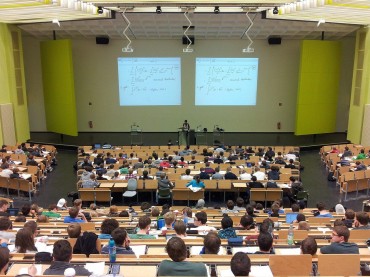YOKOHAMA, Japan, Oct. 16 (Korea Bizwire) — At today’s press conference at the International Association for the Study of Lung Cancer (IASLC) 18th World Conference on Lung Cancer (WCLC), the world’s preeminent lung cancer researchers provided new insights on CT screening, smoking cessation and mesothelioma. The discussion focused in particular on the conference’s host country of Japan, which maintains a relatively high rate of smoking.
Major Advances in CT Screening: A Radiologist’s Perspective
CT screening was first introduced when helical CT scanners became available in the early 1990s. Since then, there have been remarkable advances in CT scanner technology with concurrent increases in the number of CT examinations per year by approximately 10% annually, as shared by Dr. Claudia Henschke of Mount Sinai in the United States. Thanks to more powerful hardware and image reconstruction algorithms in today’s multidetector CT (MDCT), it has become possible to conduct faster scanning at lower radiation doses.
In regards to lung cancer screening, thinner collimation has led to the detection of many more small pulmonary nodules. Additionally, there have been evolutions in diagnostic techniques such as percutaneous biopsies, navigational bronchoscopy and PET scans, and these advances have been integrated into the regimen of screening with a resulting decrease in the frequency of surgical resection of benign nodules.
“Advancements in CT screening over the past few decades have proven to be a critical step forward in our efforts to conquer lung cancer,” said Dr. Henschke. “Among the many advantages of newer CT screening technology, we can now better assess nodule size and growth connected to the probability of malignancy and lung cancer aggressiveness. For the first time, imaging as a biomarker for aggressiveness has been used to monitor whether a cancer is progressing. We are encouraged by the progress we’ve made as a result of CT screening improvements, and we look forward to this technology saving even more lives.”
Integration of smoking cessation program within CT lung cancer screening program shows life-saving and cost-effective results
A study presented by Dr. William Evans of McMaster University in Canada found that integrating robust smoking cessation programs into an organized low-dose CT (LDCT) lung cancer screening program has the potential to decrease mortality rates while being relatively cost-effective. “To achieve the maximal benefits of a LDCT screening program, it is essential to incorporate a robust smoking cessation intervention,” said Dr. Evans. “In my long career as an oncologist, I have not been able to save any patients from advanced non-small cell lung cancer. I believe that an organized lung screening program can be used to provide teachable moments for heavy smokers and, ultimately, save lives.” The full press release can be found here.
Mayo Clinic study cites race and socioeconomic factors as influential in non-small cell lung cancer (NSCLC) patient survival rates
New research found race and specific socioeconomic factors to have a significant influence on disparities in the survival rates of non-small cell lung cancer (NSCLC) patients, according to Dr. Yanyan Lou of the Mayo Clinic in the United States. The specific socioeconomic factors that were associated with worse outcomes included lower education levels, lower median income and uninsured status. Read the full press release here.
Emerging epidemic of novel tobacco products in Japan and a new horizon of tobacco control
Dr. Yumiko Mochizuki of Tobacco Free Japan and the Japan Cancer Society spoke to the urgency of the emerging epidemic of novel tobacco products, such as “heat-not-burn” products, that is taking hold in Japan.
Japan has been known as a smokers’ paradise in the last century, but thanks to significant progress, the smoking rate is now lower than 20%, which is comparable to that of other developed countries. However, according to the World Health Organization, Japan’s tobacco control policies are scored at the lowest level, particularly because of the lack of smoking bans.
The tobacco industry targeted Japan as their global test market for new tobacco products such as heat-not-burn brands. Despite misleading claims by the industry saying that these products cut toxic emissions by 90% or 99%, they contain a significant amount of nicotine and still produce toxic vapors. These products remain addictive and pose a real threat.
“As the tobacco industry ramps up their marketing efforts in an effort to capture 50% of the market share in Japan by 2020, researchers and the government must work to provide scientific evidence that will support appropriate regulations for this product,” said Dr. Mochizuki. “Academia in particular has a responsibility to draw attention to the dangers of these products.”
Early palliative care provides no additional quality of life benefits for recently diagnosed malignant pleural mesothelioma (MPM) patients
Early specialist palliative care for patients that were recently diagnosed with malignant pleural mesothelioma (MPM) does not impact quality of life (QOL) measures, according to research presented by Prof. Fraser Brims of Curtin University in Australia. The results of the international multicenter study indicate that there is no role for routine early referral to palliative care, regardless of symptoms, as there was no impact on quality of life (or mood) in the recently diagnosed MPM patients in the intervention group. To read the full press release, click here.
Livestreams of the daily press conferences are available here.
About the WCLC
The World Conference on Lung Cancer (WCLC) is the world’s largest meeting dedicated to lung cancer and other thoracic malignancies, attracting over 6,000 researchers, physicians and specialists from more than 100 countries. The goal is to disseminate the latest scientific achievements; increase awareness, collaboration and understanding of lung cancer; and to help participants implement the latest developments across the globe. Organized under the theme of “Synergy to Conquer Lung Cancer,” the conference will cover a wide range of disciplines and unveil several research studies and clinical trial results. For more information, visit wclc2017.iaslc.org.
About the IASLC
The International Association for the Study of Lung Cancer (IASLC) is the only global organization dedicated to the study of lung cancer and other thoracic malignancies. Founded in 1974, the association’s membership includes more than 6,500 lung cancer specialists across all disciplines in over 100 countries, forming a global network working together to conquer lung and thoracic cancers worldwide. The association also publishes the Journal of Thoracic Oncology, the primary educational and informational publication for topics relevant to the prevention, detection, diagnosis and treatment of all thoracic malignancies. Visit www.iaslc.org for more information.
Contacts:
Hillary Wasserman
Senior Associate
HWasserman@GroupGordon.com
+1 732-778-1896
Becky Bunn, MSc
Public Relations Manager
Becky.Bunn@IASLC.org
+1 720-254-9509
Source: IASLC via GLOBE NEWSWIRE








